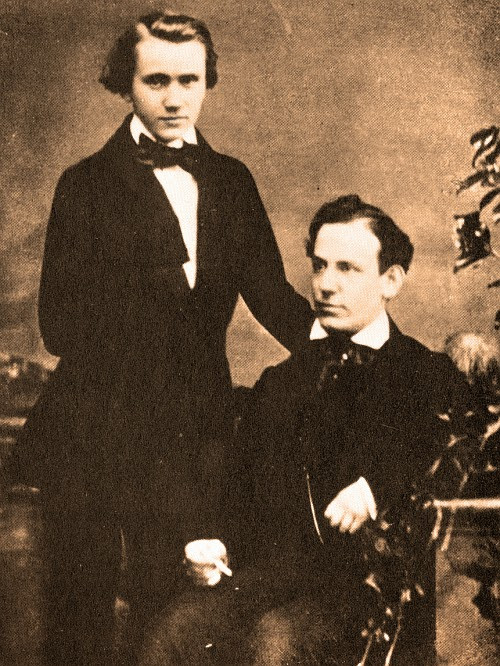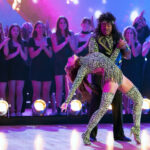Brahms’ Hungarian Dances stand as one of his most globally recognized collections, a vibrant set of 21 dances deeply inspired by the rich tapestry of Hungarian folk music. This diverse genre encapsulates the colorful auditory histories of Hungarians and Hungarian minorities spanning Poland, Czech Republic, Slovakia, Slovenia, Moravia, Croatia, and neighboring nations. Initially composed for piano, the Hungarian Dances were later orchestrated—both by Brahms himself and other composers—for the full symphony orchestra. The most famous of these, and a piece instantly recognizable to many, is undoubtedly Hungarian Dance No. 5.
Hungarian Dance No. 5 performed by Hungarian Symphony Orchestra Budapest
[Video placeholder – video from original article can be embedded here if possible, but not explicitly asked for in instructions, so will omit for now as focus is text and markdown format]
The 19th-Century Craze for Hungarian Sounds

Brahms was not unique in his fervent embrace of Hungarian musical traditions. The 19th century witnessed a significant musical movement ignited by the captivating sounds emanating from Hungary, notably sparked by Franz Liszt’s 19 Hungarian Rhapsodies. Brahms’ own venture into this captivating realm of classical music was fueled by two prevailing trends of the mid-to-late 1800s. Firstly, piano compositions for four-hands—requiring two performers to share a piano, their hands interweaving across the keyboard—were reaching unprecedented levels of popularity in domestic settings and concert halls. Secondly, there was a burgeoning demand across Europe for music that echoed the melodies and rhythms of newly immigrated minority cultures, adding exotic flair to taverns and social gatherings. This cultural backdrop set the stage perfectly for the enthusiastic reception of Brahms’ Hungarian Dances, and particularly the vivacious Hungarian Dance No. 5.
A Chance Encounter and Lasting Inspiration

The most profound catalyst for Brahms’ composition of his Hungarian Dances arose from a serendipitous meeting years prior with Hungarian violinist Ede Reményi. Intriguingly, Reményi shared a teacher with violinist Joseph Joachim, for whom Brahms would later pen his renowned Double Concerto for Violin and Cello, highlighting the interconnectedness of the 19th-century classical music scene. Just a few years after first witnessing Reményi’s captivating performances, a young, 20-year-old Brahms took on the role of his accompanying pianist. This pivotal experience saw Brahms touring alongside Reményi, immersing himself deeply in the rich textures of Hungarian musical heritage directly from a native source. This authentic exposure proved invaluable, shaping Brahms’ understanding and appreciation of Hungarian folk idioms.
Fueled by this genuine immersion in Hungarian folk music, Brahms eventually channeled his inspiration into composition. He embarked on creating his own works within this vibrant style. Among the 21 dances that constitute the Hungarian Dances, only Nos. 11, 14, and 16 are considered to be entirely original creations by Brahms. However, the complete collection, including the immensely popular Hungarian Dance No. 5, remains among his most frequently performed and beloved pieces. Within these dances, Brahms masterfully captured the distinctive, undulating, and jubilant spirit inherent in the csárdás and verbunkos, traditional Hungarian folk dances renowned for their dramatic shifts in tempo, lively and infectious rhythms, and dazzling displays of virtuosity. Hungarian Dance No. 5 perfectly embodies these characteristics, its fiery tempo and memorable melodies making it a standout piece.
The term csárdás itself is an umbrella term encompassing a diverse array of Hungarian folk dances. These dances, found across various ethnic regions, exhibit subtle regional variations in nomenclature, structure, and performance practices. Both men and women participate in csárdás dances, with female dancers traditionally wearing wide, flowing skirts that create a striking flared shape as they twirl and spin, a visual element often seen in performances of Hungarian Dance No. 5 interpretations.
The verbunkos, the older of the two dance forms, traces its origins back to 18th-century Hungary’s military traditions. The very term verbunk derives from the German verb “werben,” meaning “to recruit.” In a fascinating recruitment strategy, military units would stage elaborate parties in towns, complete with food, drink, and, crucially, dancing, all in the hopes of enticing young men to enlist. Officers, led by their sergeant, would take center stage, engaging in a compelling display of stomping, high kicks, spur-clicking, and heel slaps—demonstrations of masculine prowess and celebratory energy. Prospective recruits would gather, drawn in by the spectacle, and as the energy of the verbunkos reached fever pitch, they were often drawn into the dance itself, sometimes effectively enlisted with a simple, symbolic handshake amidst the revelry. The rhythmic drive and dynamic shifts present in verbunkos are clearly audible in the dramatic character of Hungarian Dance No. 5.

Nearly a century and a half later, Brahms’ Hungarian Dance No. 5, and the wider set, retain the same vibrant energy that characterized their initial performances in taverns and elegant salons throughout Europe. Encapsulated within the black and white of musical notation is a powerful homage to the diverse history and people of Hungary. The music continues to rouse and excite listeners with its spirited, swinging melodies. However, perhaps it’s best to be cautious whose hand you shake when the music of Hungarian Dance No. 5 takes hold!
Check out Some Memorable Hungarian Dances with Charlie Chaplin, Looney Tunes, and two naked Frenchmen and a towel.
Hungarian Dances Nos. 5 and 6 will be featured on BRAHMS FEST on Saturday, February 1 at 8 PM and Sunday, February 2 at 4 PM at the Lesher Center for the Arts in Walnut Creek. Tickets start at $44 / $20 for students 25 and under with valid Student I.D. and can be purchased online or by calling the Lesher Center Box Office at 925.943.7469.

